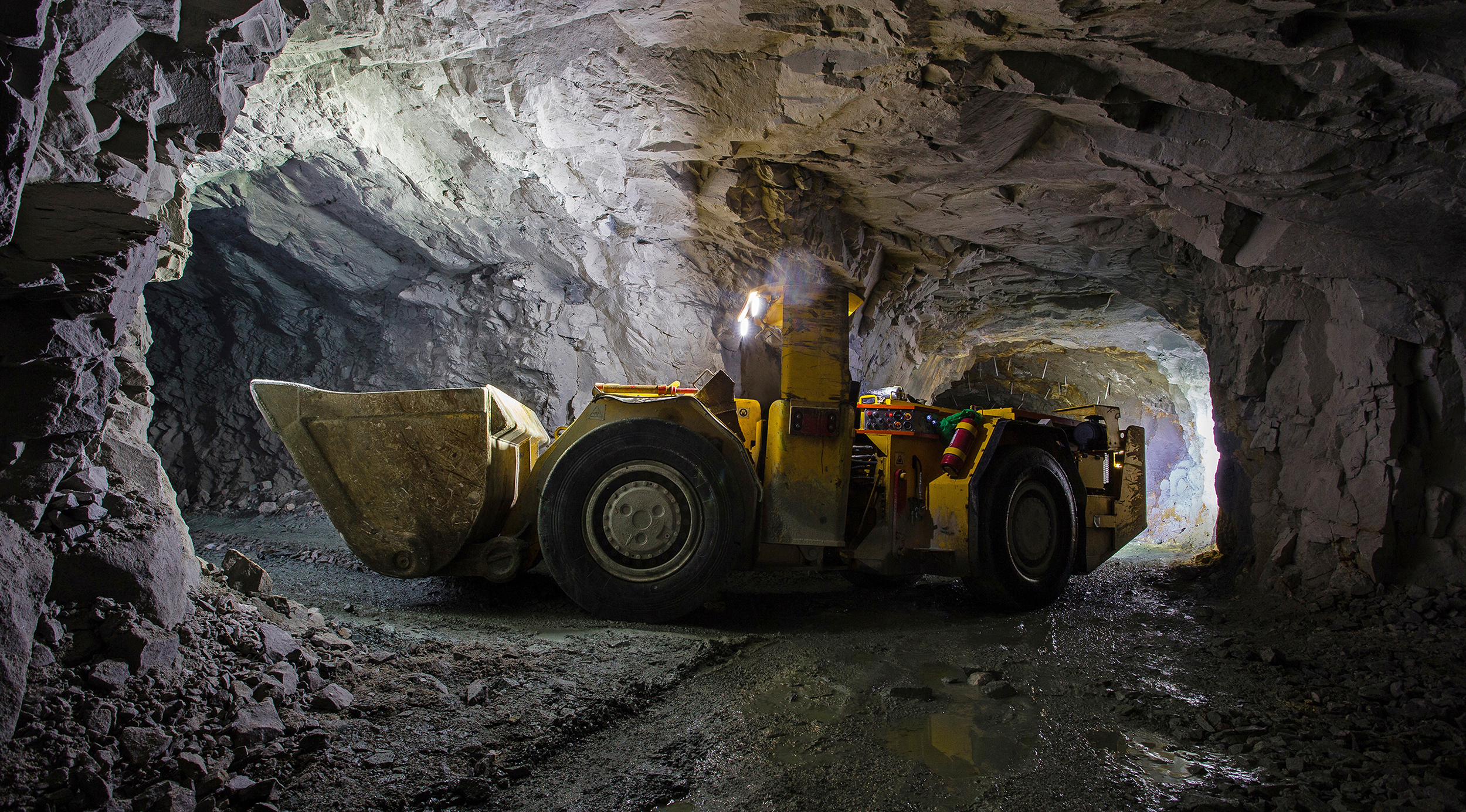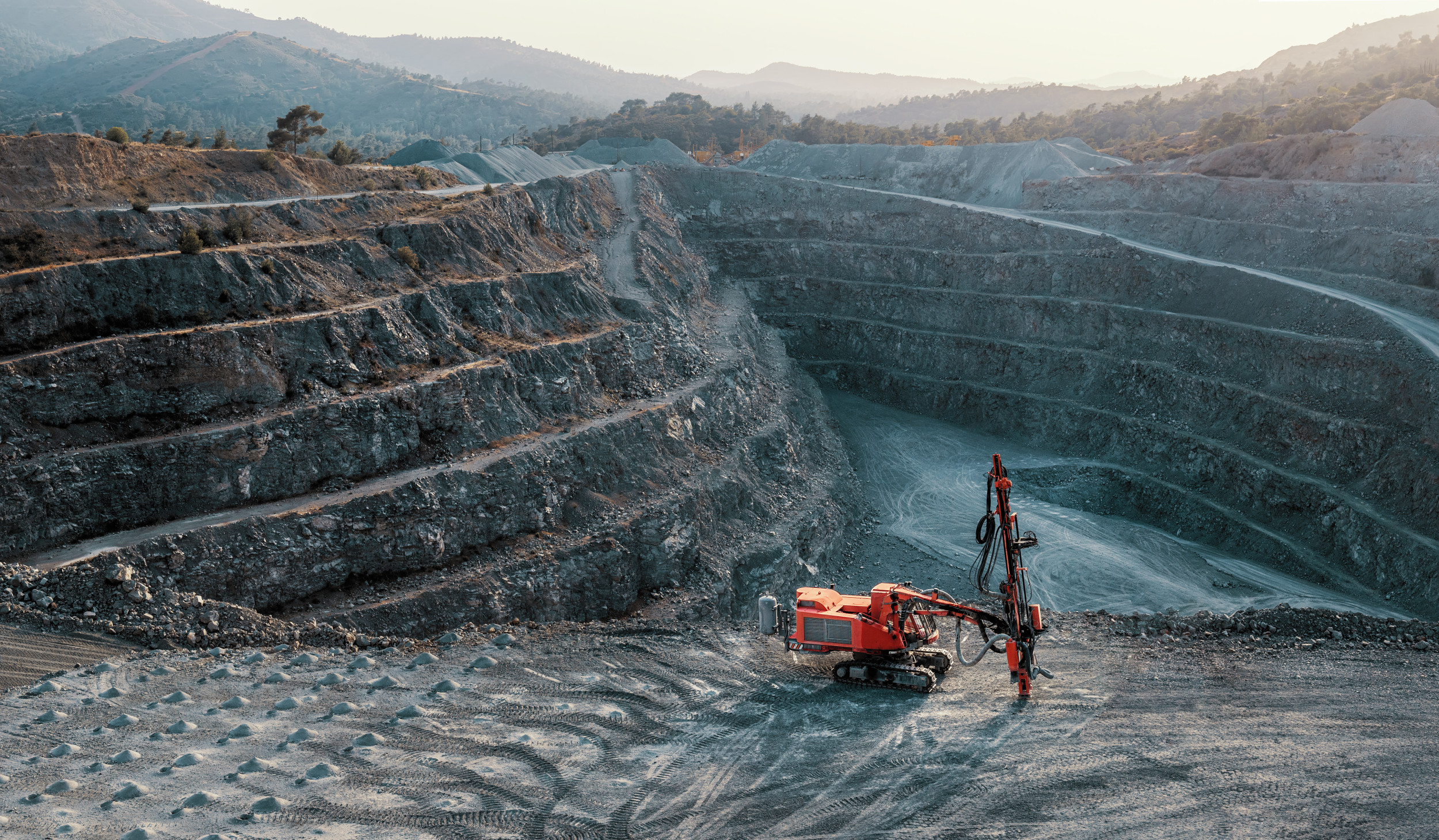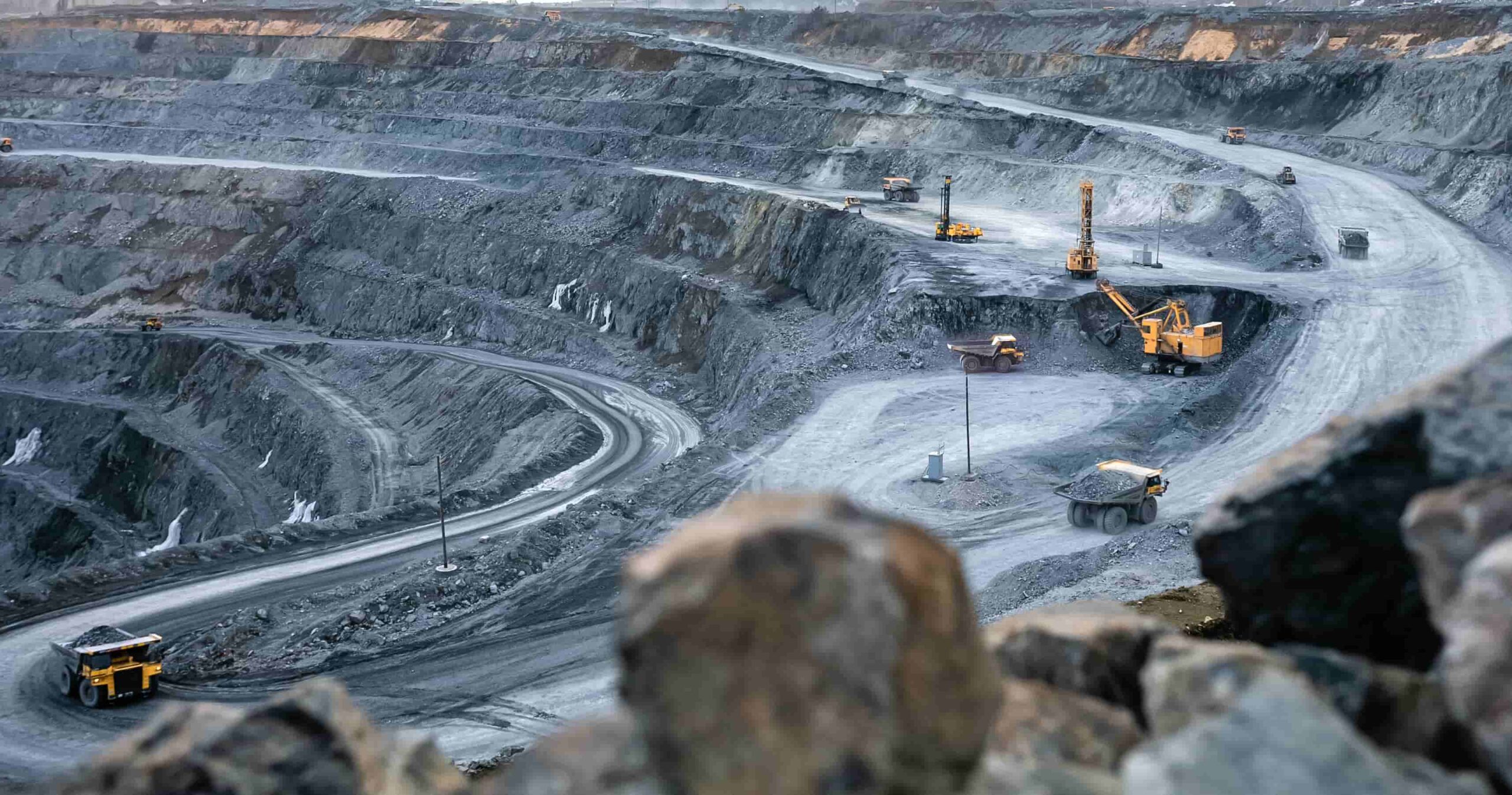Have you ever considered the people who truly make things happen deep beneath the earth’s surface? It's almost like thinking about the very heart of industry, where massive machines move valuable resources. We're talking about the mine driver, a person with a rather significant job. This role, you see, is all about getting those big, heavy vehicles to do their work in places that are, well, quite unique and sometimes a bit challenging.
It's interesting, too, how the word "mine" itself can mean so many different things, isn't it? As my text reminds us, "mine" can be a place where we dig for minerals, or it could even be a type of bomb put below the earth, or even a way to manage your personal data, like the "Mine" app that helps you control your digital footprint. But when we talk about a mine driver, we're usually picturing someone operating powerful equipment in a mineral extraction site, a place where the earth gives up its treasures.
This article will explore what it truly means to be a mine driver, looking at the daily tasks, the skills needed, and the important focus on safety. We'll also touch upon how technology is changing this work, and even, in a way, how the idea of "mine" extends into our digital lives, like when we explore new gaming adventures on the Minecraft official site, which is, you know, all about mining in a virtual world. So, let's get into what makes this job so important and, frankly, pretty fascinating.
Table of Contents
The Daily Rhythm of a Mine Driver
Skills and Training for Mine Drivers
Safety First in Mining Operations
Technology Shaping the Mine Driver Role
Mine Drivers in the Digital World: Beyond the Pit
The Future Outlook for Mine Drivers
Frequently Asked Questions About Mine Drivers
Wrapping Up the Mine Driver Story
What is a Mine Driver?
A mine driver, sometimes called a mining vehicle operator or heavy equipment operator in mines, is a person who controls large machines inside a mine. These machines are really big, and they help move earth, rock, and valuable materials. You might see them operating haul trucks, loaders, or even specialized drills. This work happens both above ground, in open-pit mines, and deep below, in underground operations. It’s a very hands-on job, requiring a good sense of how machines work and how to handle them in tight or uneven spaces.
The main goal of a mine driver is to move things from one place to another. This could be taking raw ore from where it's dug out to a processing area. Or, perhaps, they might move waste rock to a different spot. Their work directly supports the overall effort to extract minerals, whether it's coal, gold, copper, or something else entirely. So, in a way, they are a vital part of the whole operation, making sure materials keep flowing.
It's not just about driving, though; it’s also about being aware of your surroundings. These environments can be dusty, loud, and sometimes a bit dark, especially underground. That means a mine driver needs to be constantly paying attention to what's around them, like other vehicles, people, and the mine structure itself. You know, it's pretty much a constant vigilance sort of role.
The Daily Rhythm of a Mine Driver
A mine driver's day usually starts with checking their machine. They need to make sure everything is working correctly, from the tires to the lights and the brakes. This is a crucial step for safety and efficiency, too. After these checks, they get into the cab and begin their shifts, often following specific routes or instructions from a supervisor.
Their tasks can vary quite a bit depending on the type of mine and the specific machine they operate. An operator of a haul truck, for example, will spend their shift loading up the truck and then driving it along designated paths to dump the material. Someone operating a loader might be responsible for scooping up loose rock and putting it into other vehicles or onto conveyor belts. It's a continuous process of moving materials, you see.
Working conditions are something to consider as well. Mine drivers often work long shifts, sometimes in remote locations. The environment can be challenging, with dust, noise, and varying temperatures. Underground mine drivers work in confined spaces, needing to be comfortable in areas with limited natural light. So, in some respects, it takes a certain kind of person to thrive in this setting, someone who can handle those unique conditions.
Skills and Training for Mine Drivers
To become a mine driver, a person needs a specific set of abilities and some good training. First off, they need excellent hand-eye coordination and a strong sense of spatial awareness. Operating large machinery in tight spots, or on uneven terrain, definitely calls for that. They also need to be able to follow directions precisely and work as part of a team, as mining operations are very much a group effort.
Formal training programs are typically required. These programs teach individuals how to operate different types of mining equipment safely and effectively. They cover everything from basic machine controls to maintenance checks and emergency procedures. Many companies also offer on-the-job training, where new drivers learn from experienced operators. This kind of practical experience is, you know, absolutely essential.
Beyond the technical skills, mine drivers need to be responsible and disciplined. They must understand the importance of safety rules and follow them without fail. Being able to concentrate for long periods is also a big plus, given the repetitive nature of some tasks. Basically, it's a job that demands both physical skill and a very clear head, which is pretty much what you'd expect for operating such powerful tools.
Safety First in Mining Operations
Safety is, without question, the most important part of being a mine driver. The mining environment, while much safer than it once was, still carries inherent risks. This is why strict safety protocols are in place, and every mine driver must follow them very carefully. You know, it's about protecting themselves and everyone else working nearby.
One aspect of safety involves understanding the ground conditions and potential hazards, like unstable rock or water accumulation. Drivers are trained to recognize these signs and report them immediately. They also learn about ventilation systems, which are crucial for keeping the air breathable underground. Wearing personal protective equipment, such as hard hats, safety glasses, and reflective clothing, is mandatory. This is just part of the daily routine, you see.
Regular safety briefings and drills are a common occurrence. These help keep everyone refreshed on emergency procedures, like what to do in case of a fire or a collapse. The goal is to create a culture where safety is always the top priority, and everyone looks out for each other. It’s a collective effort, really, to make sure everyone goes home safe at the end of their shift. To learn more about mining safety practices, you could visit the Mine Safety and Health Administration (MSHA) website.
Technology Shaping the Mine Driver Role
Just like many other jobs, the role of a mine driver is changing with new technology. We are seeing more and more automation in mining operations. This means some machines can operate themselves, or they can be controlled remotely from a control room far away from the actual mining area. This sort of change, you know, is making things different for people who work in these roles.
GPS and other tracking systems are now commonly used to guide vehicles and monitor their movements. This helps with efficiency and also with safety, making sure machines don't collide and are always on the right path. Cameras and sensors provide drivers with a better view of their surroundings, even in dusty or dark conditions. These tools give operators a lot more information, which is, frankly, pretty helpful.
For mine drivers, these changes mean that their job might involve less direct physical operation and more monitoring and oversight. They might become more like supervisors of automated systems, or they might operate machines from a comfortable office environment. So, in a way, the skills needed are shifting from purely manual operation to a blend of operating and managing advanced systems. This means training will continue to adapt to these new tools and methods, too.
Mine Drivers in the Digital World: Beyond the Pit
While we've mostly talked about mine drivers in the physical world, operating big machines, the concept of "mine" also extends into our digital lives, as my text points out. Think about gaming, for instance. The Minecraft official site invites you to "explore new gaming adventures." In a sense, players in Minecraft are "mine drivers" too, but in a virtual space. They're controlling characters that dig, build, and gather resources, driving their own digital mining experiences. It's, like, a completely different kind of "mine" to navigate, isn't it?
Then there's the "Mine" app mentioned in my text, which "helps you discover where your personal data is and manage your digital footprint." Here, the idea of a "driver" takes on a different meaning. You, the user, become the "mine driver" of your own data. You are actively controlling and deciding "where your data should or shouldn't be." This is about taking charge of your information, rather like how a mine driver takes charge of their vehicle. It's, you know, a very important form of control in today's world.
So, whether it's navigating complex virtual worlds, or taking command of your personal data, the idea of "driving" or controlling something that is "mine" is a powerful one. It highlights how we interact with different kinds of "mines," both real and digital. These varied meanings show just how versatile the concept of "mine" can be, from physical extraction to personal information. Learn more about data control on our site, and check out how virtual worlds are built by visiting this page .
The Future Outlook for Mine Drivers
The role of the mine driver is certainly changing, but it's not disappearing. As we've discussed, automation is playing a bigger part, but human oversight and skill will remain essential. There will always be a need for people who understand how these machines work and how to handle unexpected situations. So, in some respects, the job is evolving, not vanishing.
Future mine drivers might spend more time in training for new technologies, learning how to operate advanced control systems or troubleshoot automated equipment. The emphasis could shift even more towards safety and efficiency, with technology providing better tools for both. This means that people entering this field now will need to be adaptable and ready to learn throughout their careers. It's, you know, a pretty dynamic field to be in.
Overall, the demand for resources means mining will continue, and with it, the need for skilled operators. The job might look a bit different in the years to come, with more remote work or highly specialized tasks, but the core idea of moving materials from the earth will remain. So, it's a profession with a solid future, just one that will keep adjusting to new ways of doing things, which is, honestly, pretty exciting.
Frequently Asked Questions About Mine Drivers
What kind of equipment does a mine driver operate?
A mine driver operates a variety of large machines, including massive haul trucks that carry materials, front-end loaders that scoop up rock, and specialized drilling equipment used for breaking ground. They might also handle dozers or graders, depending on the specific tasks at hand. It's a pretty diverse set of vehicles, you know.
Is being a mine driver a dangerous job?
While mining historically had high risks, modern mining operations prioritize safety very much. Strict rules, advanced technology, and thorough training have made it much safer. However, like any heavy industry, there are still inherent dangers, which is why adherence to safety protocols is absolutely critical for every mine driver. So, while risks exist, they are very carefully managed.
How long does it take to become a qualified mine driver?
The time it takes to become a qualified mine driver can vary. It often involves completing a training program, which might last a few weeks to several months, followed by hands-on experience. Many companies also require a period of on-the-job training under the guidance of an experienced operator. It's a process that builds skill and confidence over time, you see.
Wrapping Up the Mine Driver Story
So, we've taken a look at the mine driver, a person who truly helps keep the wheels of industry turning, often in challenging places. From operating huge vehicles deep underground to, in a way, "driving" our experiences in games like Minecraft, or even managing our personal data with apps like "Mine," the idea of controlling what's "mine" is quite powerful. It's a job that demands skill, attention, and a strong commitment to safety, you know, every single day.
The world of mining, like so many other fields, is always changing, with new technologies coming into play. This means the mine driver's role will keep evolving, perhaps becoming more about managing smart systems than just manual operation. But the need for skilled people to oversee these vital tasks will remain. So, if you're curious about careers that involve big machines and important work, or simply fascinated by how we extract resources, the mine driver's story is one worth considering. It's a pretty essential part of our modern world, after all.



